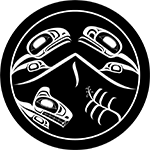What is Cultural Burning and Why Should We Use It?
Cultural Burning is a traditional practice that has been used by Indigenous peoples for thousands of years to manage the landscape in ways that support cultural, ecological, and community needs. While the specific practices and meanings vary among different Indigenous groups, cultural burning generally refers to the controlled application of fire to land to achieve specific objectives within a designated area.
These burns are typically low in intensity and guided by an Elder or Fire Knowledge Keeper. Often, they are carried out in collaboration with agencies like the BC Wildfire Service (BCWS).

The Collaboration Between the Gitxsan and BC Wildfire Service
The Gitxsan Laxyip Management Office (GLMO) has begun a collaborative relationship with the BC Wildfire Service to restore and develop cultural burning practices within Gitxsan Lax Yip territory. A critical first step in this initiative involves identifying suitable locations for controlled burns within Huwilp (clans) Lax Yip who want to participate in Cultural Burning. Each Wilp may have unique goals for cultural burning, and as a result, site-specific burn prescriptions are developed for each area. Common objectives for cultural burning include but are not limited to cultural and language preservation, fuel mitigation, food and medicinal plant revitalization, and habitat enhancement.
Once a cultural burn prescription is prepared, an operational burn plan is created. This plan outlines the necessary fire equipment, control lines, personnel, weather conditions, and safety protocols. The burn is led by a certified burn boss and only takes place when conditions are deemed safe—typically in the spring or fall. If safe conditions are not met in a given year, the burn is postponed until the following season. Currently, the BCWS plays a significant role in executing these burns due to their expertise in fire management and the availability of trained fire crews and equipment.
Building Capacity Within Gitxsan Communities
An essential aspect of this initiative is developing skills and capacity within Gitxsan communities, businesses, and individuals to engage with cultural burning practices. However, the legal and regulatory requirements for applying fire to the land in BC can be challenging. These standards are designed to ensure safety but can also create barriers to the application of cultural fire practices. As the cultural burning project progresses, it is crucial to involve the Gitxsan people in every aspect of the process—from developing burn prescriptions to applying fire on the land.

Mitigating Wildfire Risks with Cultural Burning
Wildfires are an increasing concern as they continue to impact communities and landscapes in devastating ways, particularly in light of climate change. The rising frequency of extreme weather, including prolonged droughts, is creating conditions where large, uncontrolled wildfires are more likely to occur. Cultural burning is being recognized as an effective tool to help mitigate the risk of catastrophic wildfires. By consuming forest fuels in a controlled manner, cultural burns can help reduce the intensity of larger wildfires and provide valuable experience for fire crews in managing fire safely.


The History and Importance of Cultural Burning
Indigenous use of fire has a long history across North America, including within Gitxsan culture. However, colonial laws in the early 20th century banned Indigenous fire practices, which led to the loss of vital knowledge and traditional burning areas. Several First Nations, including those in BC, are now reviving cultural burning practices. Gitanyow, for example, is in its third year of developing cultural burns, expanding their program and gaining more experience each year.

The Future of Cultural Burning
Restoring the knowledge and skills associated with cultural burning is a process that takes time, and the practice may evolve to meet contemporary needs. With wildfires becoming more frequent and severe, cultural burning offers a valuable tool to help prepare the land and communities for the challenges ahead. By reintroducing this traditional practice, we can better manage the landscape and reduce the impact of large, uncontrollable wildfires in the future.









For more resources on cultural burning, including guides, training, and partnership opportunities, visit the links below:
Cultural Burning Project files:
Cultural Burning Project – Questionnaire
Cultural Burning Project Infographic
Cultural Burning Brochure – Digital Download (layout created for viewing only)
Cultural Burning Brochure – For Printing (layout created for printing)

